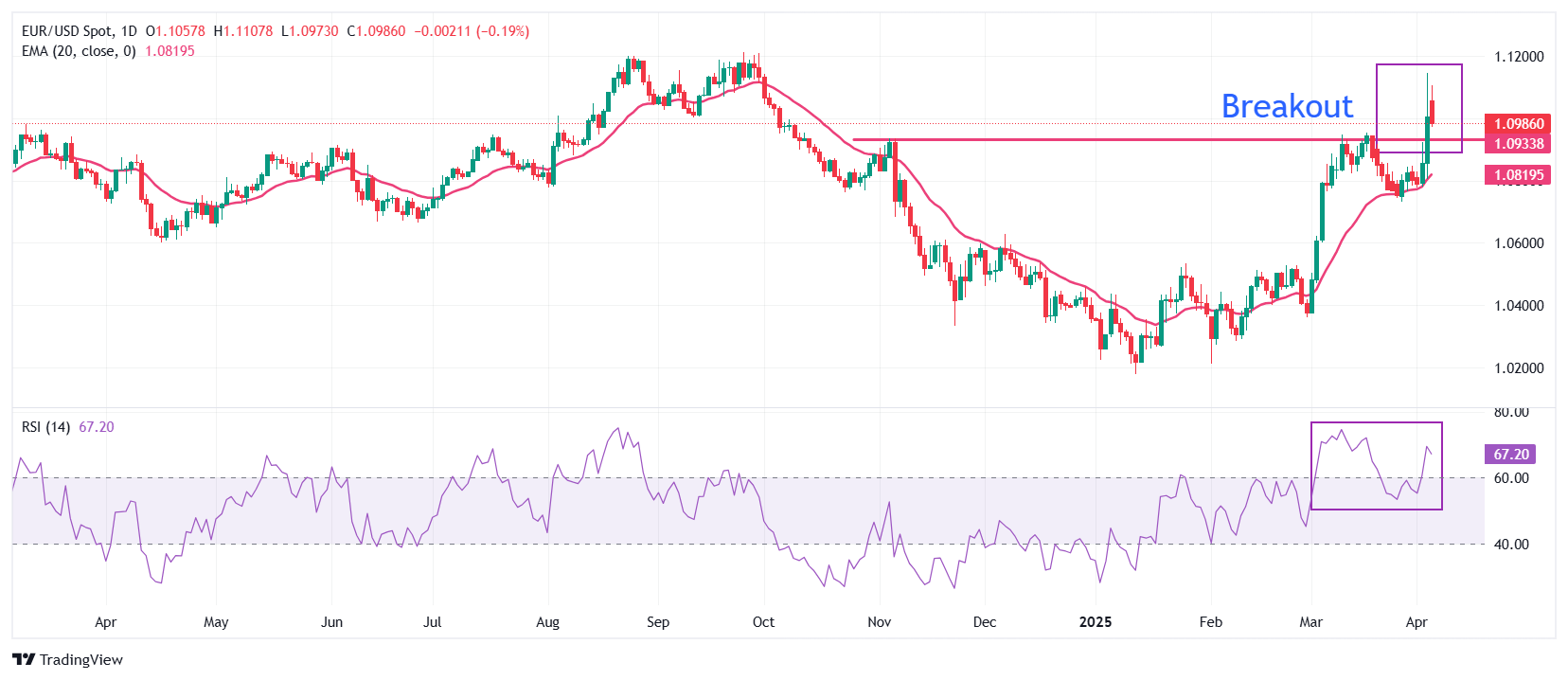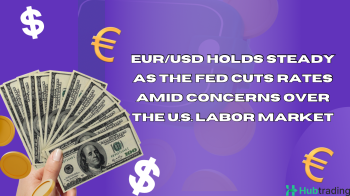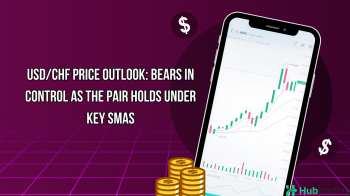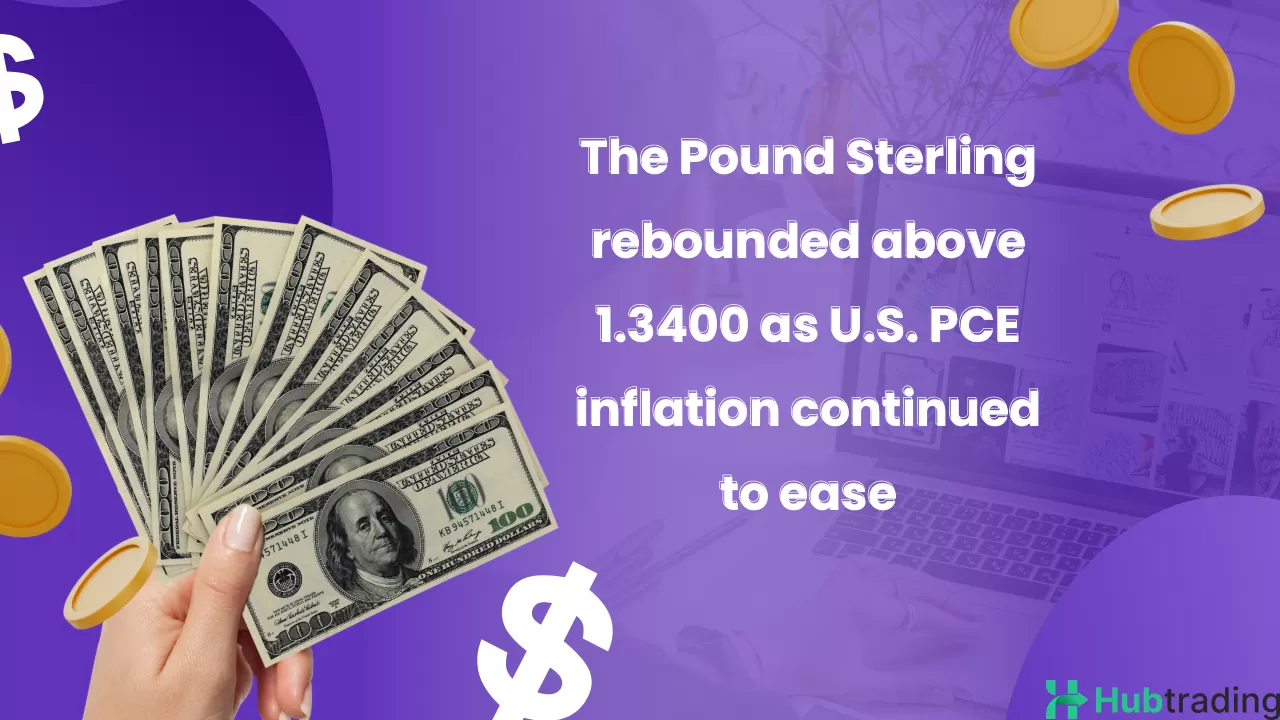EUR/USD retraces to around 1.1030 during European trading hours on Friday after reaching a six-month high of 1.1145 the previous day. The pullback comes as the US Dollar (USD) rebounds following the tariffs-driven sell-off caused by US President Donald Trump and ahead of the upcoming March Nonfarm Payrolls (NFP) data and Federal Reserve (Fed) Chair Jerome Powell’s speech in the North American session.
The US Dollar Index (DXY), which tracks the Greenback’s performance against six major currencies, recovers above 102.00 after hitting a six-month low near 101.25.
Economists predict the US economy added 135K jobs in March, down from 151K in February. The Unemployment Rate is expected to remain steady at 4.1%, while Average Hourly Earnings are anticipated to have grown at a slower pace of 3.9% year-on-year, compared to 4% in February, with monthly earnings increasing by 0.3%.
The impact of the employment data is expected to be limited on the market’s expectations for the Fed’s monetary policy unless there is a significant change in the labor market figures, as investors are more focused on potential inflation risks.
According to the CME FedWatch tool, traders are increasingly betting that the central bank may cut interest rates at the June policy meeting, following President Trump’s tariff announcement. The probability of the Fed maintaining interest rates in the current range of 4.25%-4.50% has also dropped to 65.8%, down from 81.5% a week ago.
Daily Digest Market Movers: EUR/USD Declines as US Dollar Gains Temporary Ground
- EUR/USD sees a decline as the US Dollar recovers from its recent lows. However, the USD’s outlook remains uncertain, as the harsher-than-expected reciprocal tariffs imposed by President Donald Trump have led market experts to become more pessimistic about global economic growth, including in the US.
- Market participants fear that the implementation of full-scale tariffs will drive inflation and slow down US economic growth, potentially leading to stagflation, which would complicate the Federal Reserve’s policy decisions. On Wednesday, Trump announced a 10% baseline levy on all imports into the US, set to take effect on Saturday, alongside varying tariffs for each country, ranging from 10% to 49%.
- Investors will closely watch Federal Reserve Chair Jerome Powell’s upcoming speech for hints on the central bank’s likely monetary policy response to the economic impact of these tariffs.
- Meanwhile, the Euro (EUR) declines as investors anticipate that Trump’s tariffs will hinder Eurozone economic growth, raising concerns about a potential trade war between the US and the Eurozone. European Commission President Ursula von der Leyen warned of dire consequences for millions globally, and stated that the Eurozone is prepared to retaliate with countermeasures if negotiations with Washington fail.
- Furthermore, the expectation that the European Central Bank (ECB) will cut interest rates in April has added additional pressure on the Euro. ECB officials believe that Trump’s tariff-driven inflation will not be persistent, allowing for further monetary easing.
Technical Analysis: EUR/USD Aims to Hold 1.1000

EUR/USD pulls back from its previous day’s gains, dropping to around 1.1030 during European trading on Friday. The currency pair had rallied to 1.1147 on Thursday, breaking above the prior resistance of 1.0955, marking March’s highest level. The near-term outlook remains bullish, with the 20-day Exponential Moving Average (EMA) continuing its upward trajectory around 1.0820.
The 14-day Relative Strength Index (RSI) remains above 60.00, signaling continued bullish momentum.
On the downside, the previous resistance level at 1.0955 and the March 31 high of 1.0850 will serve as key support levels. On the upside, the September 25 high of 1.1214 stands as a significant barrier for Euro bulls.





